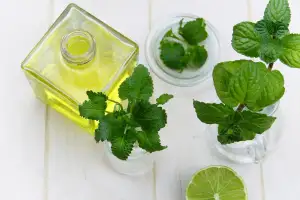Ultimate Guide: How to Clean a Cast Iron Skillet Like a Pro

- Gather materials: coarse salt, sponge, dish soap, paper towels, and a towel.
- Let the skillet cool completely before cleaning.
- Sprinkle salt on the skillet to act as a gentle abrasive.
- Use a sponge to scrub the salt around the skillet, focusing on stuck-on food.
- Rinse the skillet with hot water, avoiding soap at this stage.
- Dry the skillet thoroughly with paper towels.
- If needed, use a small amount of dish soap and warm water to gently clean the skillet.
- Dry the skillet completely with a towel to prevent rust.
- Apply a thin layer of oil to the skillet to season it after cleaning.
Gather materials: coarse salt, sponge, dish soap, paper towels, and a towel.
Before you begin cleaning your cast iron skillet like a pro, make sure you have all the necessary materials on hand. You will need coarse salt, a sponge, dish soap, paper towels, and a towel. These items will help you effectively remove any food residue without damaging the skillet's seasoning. Having these supplies ready will ensure a smooth and successful cleaning process for your cast iron cookware.
Let the skillet cool completely before cleaning.
Before you begin cleaning your cast iron skillet, it's crucial to ensure that the skillet has cooled completely. Cast iron retains heat well, so allowing it to cool down will prevent any accidental burns while handling it. Cleaning a hot skillet can also damage its seasoning or cause warping. To be safe and maintain the quality of your cast iron cookware, always let it cool to room temperature before starting the cleaning process.
Sprinkle salt on the skillet to act as a gentle abrasive.
Sprinkling salt on the skillet serves as a gentle abrasive to help loosen stuck-on food particles without damaging the cast iron surface. The coarse texture of the salt aids in lifting debris while being gentle enough not to scratch the skillet. This method is effective in removing residue and maintaining the skillet's seasoning, ensuring it remains non-stick and in optimal condition for cooking.
Use a sponge to scrub the salt around the skillet, focusing on stuck-on food.
After sprinkling salt on the skillet, take a damp sponge and start scrubbing in circular motions, focusing on areas with stuck-on food. The coarse salt acts as a gentle abrasive to help loosen any stubborn bits without damaging the skillet's seasoning. Be sure to apply gentle pressure while scrubbing to avoid scratching the surface of the cast iron. Continue scrubbing until all food particles are removed, adding more salt if necessary for tougher spots.
Rinse the skillet with hot water, avoiding soap at this stage.
After scrubbing the salt around the skillet to remove any stuck-on food particles, it's time to rinse the skillet with hot water. The hot water helps to loosen any remaining residue without the need for soap at this stage. Avoid using soap at this point as it can strip away the skillet's seasoning. Make sure to thoroughly rinse off all the salt and food debris from the skillet before moving on to the next step in the cleaning process.
Dry the skillet thoroughly with paper towels.
After rinsing the skillet with hot water, it's crucial to dry it thoroughly with paper towels. Any remaining moisture left on the surface can lead to rusting. Make sure to wipe both the inside and outside of the skillet until completely dry. This step is essential in maintaining the integrity of your cast iron skillet and preventing any damage that may occur due to excess moisture.
If needed, use a small amount of dish soap and warm water to gently clean the skillet.
If needed, use a small amount of dish soap and warm water to gently clean the skillet. Dish soap can help remove any stubborn residues without damaging the seasoning of the cast iron. Remember to be gentle while scrubbing to avoid stripping off the protective layer. After using soap, rinse the skillet thoroughly with hot water to ensure all soap residue is removed. Pat dry with a towel immediately after rinsing to prevent any chances of rusting.
Dry the skillet completely with a towel to prevent rust.
After washing and rinsing the cast iron skillet, it is crucial to dry it completely with a towel to prevent rust from forming. Any moisture left on the skillet can lead to rusting, which can damage the skillet over time. Make sure to thoroughly dry all parts of the skillet, including the handle and any crevices where water may have collected. Once the skillet is completely dry, you can proceed with seasoning it by applying a thin layer of oil to protect its surface and maintain its non-stick properties.
Apply a thin layer of oil to the skillet to season it after cleaning.
After cleaning your cast iron skillet, it is crucial to season it properly to maintain its non-stick surface and prevent rusting. To season the skillet, apply a thin layer of oil all over the pan, including the handle and outer edges. Use a paper towel to spread a high smoke point oil like vegetable oil or flaxseed oil evenly on the skillet's surface. Place the skillet upside down in an oven preheated to 350°F (177°C) for about an hour. This process allows the oil to polymerize, creating a protective layer on the skillet. Let it cool in the oven before storing it in a dry place. Regularly seasoning your cast iron skillet will enhance its performance and prolong its lifespan.
Published: 16. 03. 2024
Category: Home



